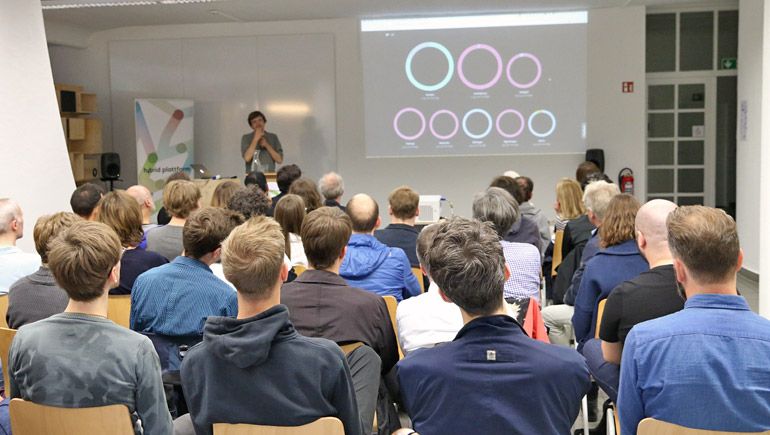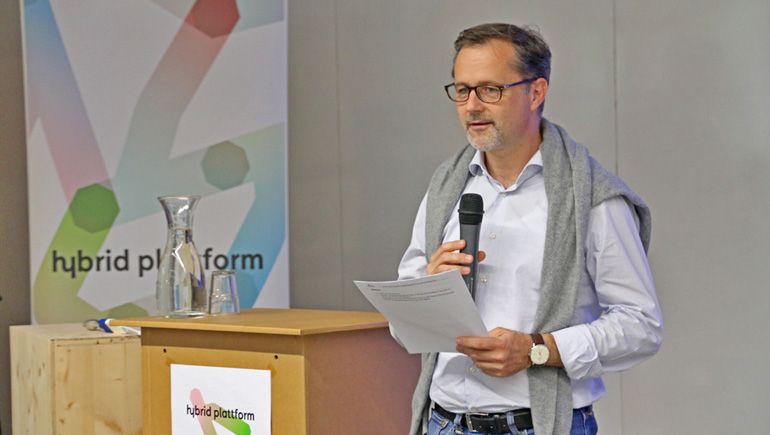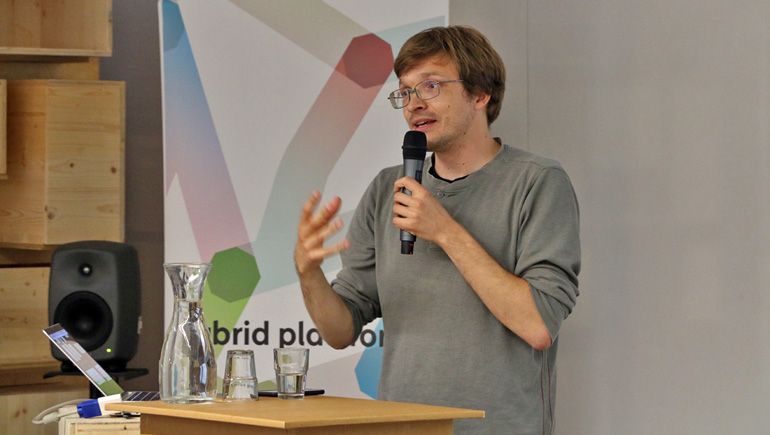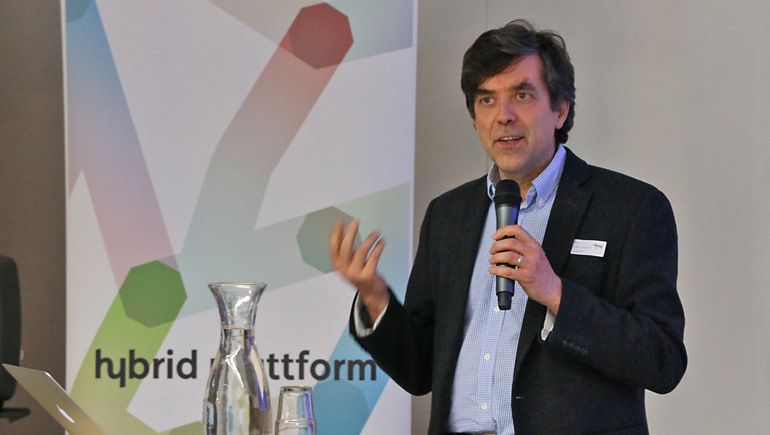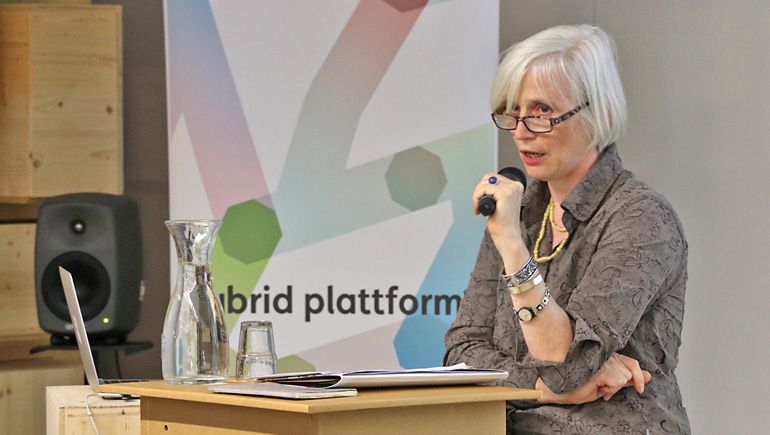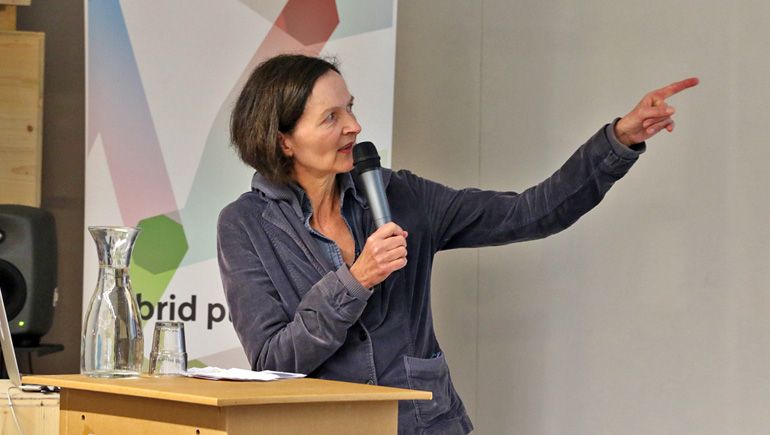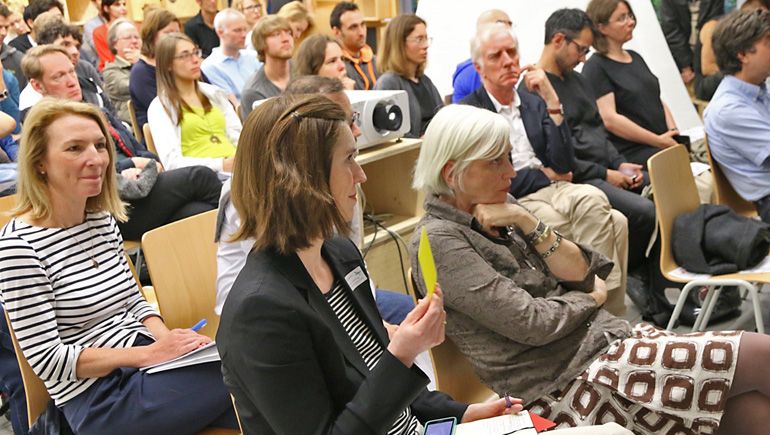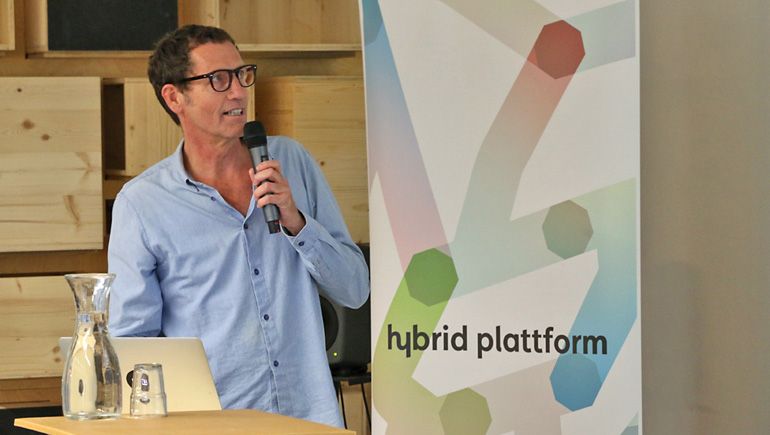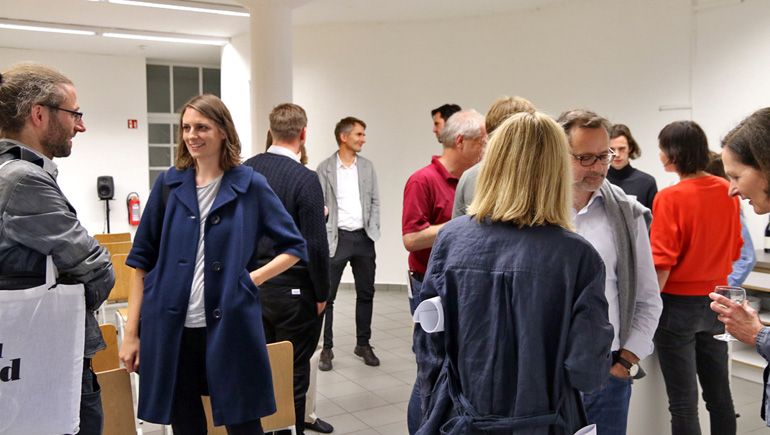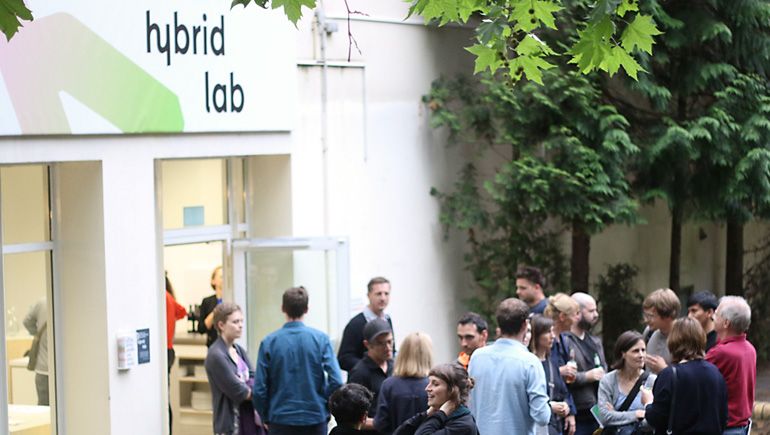On July 14th our 21st Hybrid Talks on “Visualization and Sonification” took place, being the second Talks in our new Hybrid Lab and the last of this semester.
Technology and media keep being a field of innovation; new devices and methods of data handling are developed and with them new pathways and methods of communication come to life. Devices and audiences alike are presented with countless digital data streams meant to result in sounds or visuals – and yet its data only exists in a virtual domain. The data codes – a steady, fleeting flow of numbers – are incomprehensible for the sensual human perception until made visible and audible through processes of “sonification” and “visualization”. These processes of translation can serve scientific purposes, illustrating complex interrelationships or revealing inherent structures. At the same time visual arts and sound art use abstract data as an exciting raw material for artistic exploration.
At the 21st round of the Hybrid Talks five different perspectives on “sonification” and “visualization” were presented. Distinctive aspects of this translation process of data to something that we are able to perceive und engage with were showcased. Prof. Dr. Stefan Weinzierl – head of the TU’s Audiocommunication Group and project leader of the Hybrid Platform – was the evening’s host.
Prof. Dr. Marian Dörk introduced the opportunities that lie within the translation of data from digitalized collections of cultural data – images, archives, collections – into audible and visual forms. Presenting several practical examples from his work at the Institute for Urban Futures of Potsdam University of Applied Sciences, he drew a vivid image of the fascinating interdisciplinary approaches of his discipline that connect design, cultural science and technology.
Prof. Dr. John Sullivan from the TU Berlin’s Geometry and Mathematical Physics Group talked about music that derives from geometrical problems. The inherent mathematical character of music, for example reflected in the numeric order of harmonic intervals, can be emphasized by specific compositional techniques; such created sounds acoustically answer the mathematical correlations. These techniques are used by and to be found in the work of many composers, such as in the ambient music of Brain Eno. John Sullivan coins the term “parambient” music, a neologistic combination of “parametric” and “ambience”, to describe such music that can also serve to enhance mathematical visualizations.
Prof. Dr. Sabine Sanio focused on the origins of musical concepts of “sonification” and “visualization” in the 20th century. In the early years of the century, composer Erik Satie translated indicated movements in images into musical motions for his pieces “Sports et divertissements”. Technological advances in sound technology carried new opportunities, allowing the needle of a phonograph to be understood as a tool of sonification, since the surface it scans is made audible. John Cage, avant-gardist of the new music, followed this train of thought, exploring the subtle irregularities of a blank sheet of music paper to compose his “Music for Piano”. Throughout the century, many successful attempts were made to aesthetically connect the sense of hearing to other sensations. Contemporary sound artists continue this exploration, finding their own ways of expression by translating the contemporary world into sound and back again.
This includes artists like Jutta Ravenna who presented a recent update of her “Daten-Klangfenster”, a window made of circuit boards. With the help of the visual sensor “Kinect”, this sound installation translates the movement of its observer into electronic sounds. After explaining the idea and the development of her piece, Jutta Ravenna performed a practical demonstration, allowing the audience to witness the sonification process.
The final talk was by Prof. Joachim Sauter from New Media Art and Design at the Berlin University of the Arts. He presented several fascinating works that oscillate between sonification and synesthetic perception, making this defining distinction the central focus of his talk. It was especially his collaborative work with the Icelandic musician Ólafur Arnalds, which made an intense impression on the audience. Arnalds’ calm and gently rocking sounds were transferred into the fluent movements of kinetic installations made by Joachim Sauter.
As usual, the 21st Hybrid Talks concluded with lively discussions in an informal atmosphere with the guest staying for a drink in the front yard of the new Hybrid Lab. With “Sonification and Visualization”, this semesters’ series of Hybrid Talks came to an end. We’re looking forward to October when the Hybrid Platform will again present fascinating, interdisciplinary topics from the Campus Charlottenburg.
– Marten

